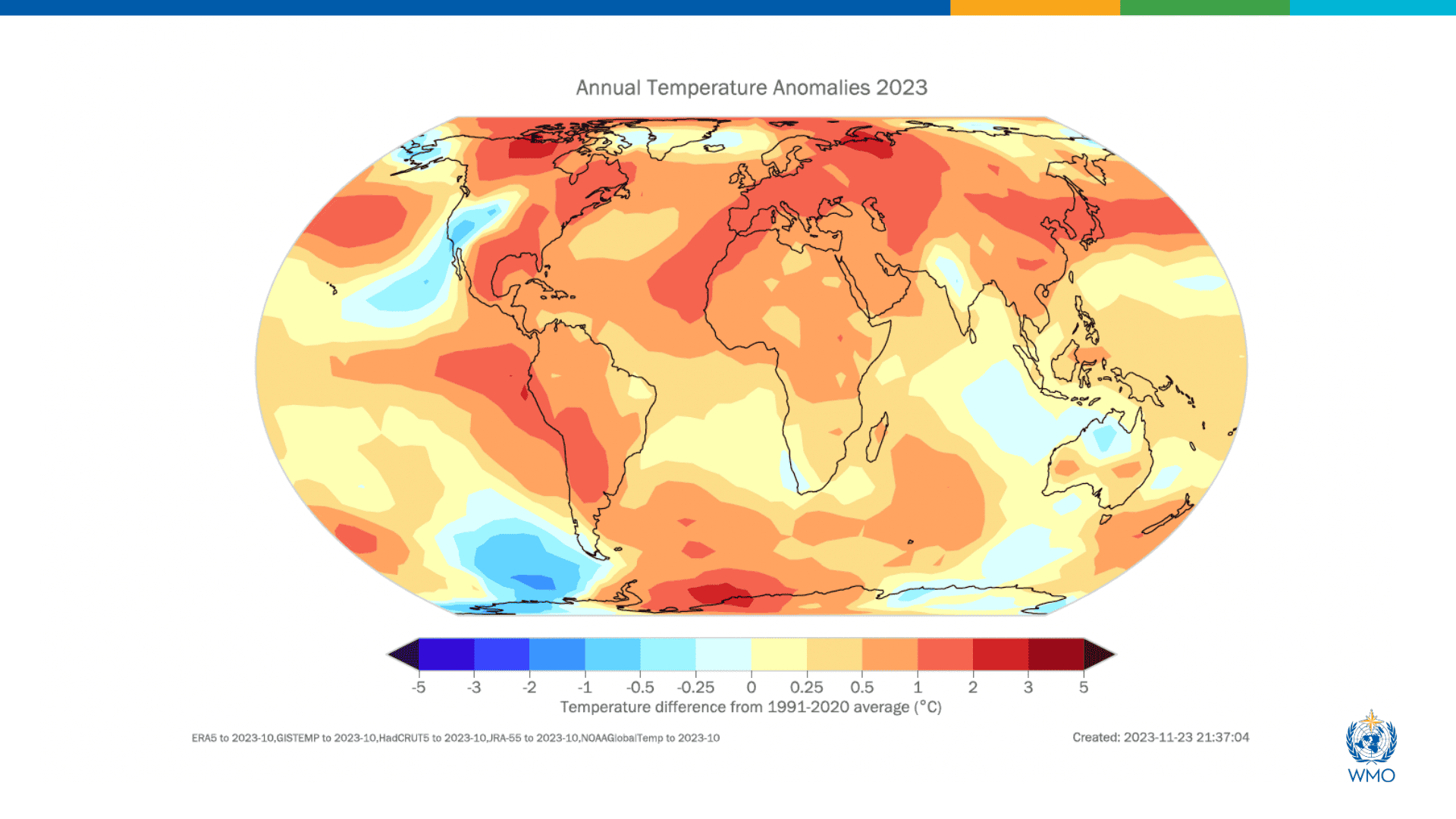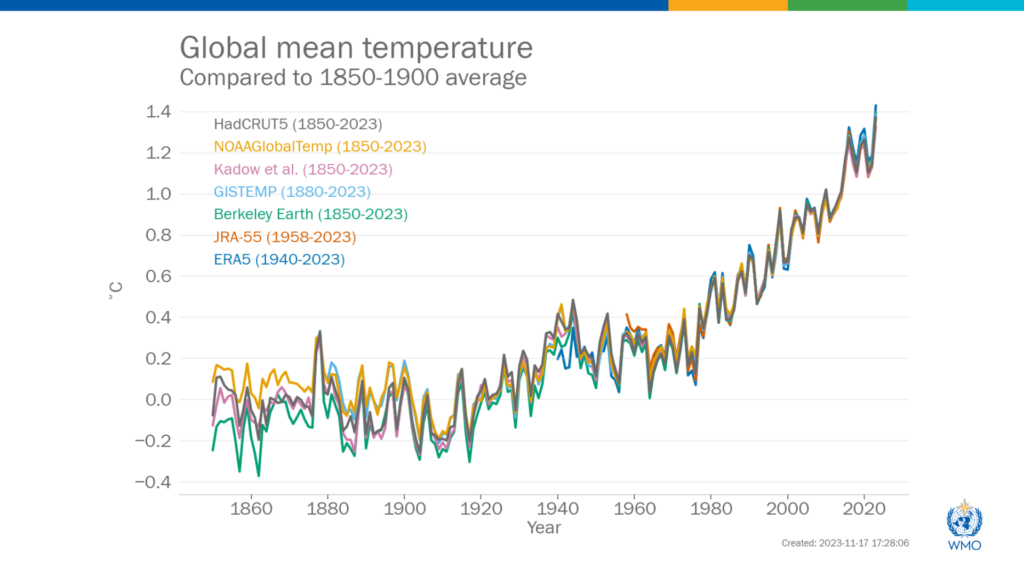
- 🌞 2023 is poised to become the warmest year on record, even if December is abnormally cold.
- 🔥 The past 9 years have all been the hottest on record.
- 🌍 We’re very close to already failing our climate change objectives.
With one month to go before the end of the year, the World Meteorological Organization (WMO) is certain that 2023 is set to be the warmest year on record. Data until the end of October shows that this year was 1.4 degrees Celsius above pre-industrial levels. That’s just 0.1 degrees away from the Paris Agreement’s main stated target. Even if we stopped all emissions magically now, we’d whoosh by that target.
It’s getting hotter
This is not an accident. The past nine years were the warmest on record. The previous hottest years were 2016 and 2020. But 2023 is shaping up to be so hot that even if December is abnormally cold, it’s unlikely to affect the ranking.
Next year’s going to be bad too. The El Niño event is likely to further fuel the heat in 2024 as it typically has the largest impact on temperature after it peaks.
“Greenhouse gas levels are record high. Global temperatures are record high. Sea level rise is record high. Antarctic sea ice is record low. It’s a deafening cacophony of broken records,” WMO head Petteri Taalas said in a news release. “We must act now to limit the risks of an increasingly inhospitable climate in this and the coming centuries.”
The report’s findings don’t necessarily mean the world is soon about to cross the threshold of 1.5C – the limit to avoid climate change under the 2015 Paris Agreement. It might take a few more years until that happens. However, a year of 1.4C has already given a worrying preview of what permanently crossing 1.5 would mean. A hotter climate brings more extreme weather, stronger hurricanes, and flooding, with huge environmental, health, and economic costs.
Currently, CO2 levels are already 50% higher than in the pre-industrial era, trapping heat in the atmosphere. The long lifetime of CO2 means that temperatures will continue to rise for many years. Also, the rate of sea level rise from 2013 to 2023 is more than twice the rate from 1993 to 2002, mostly due to ocean warming and melting of glaciers.

The Antarctic sea-ice extent reached its lowest recorded maximum for the year, falling a significant one million km2 below the previous record low. Meanwhile, glaciers in North America and Europe experienced another intense melting season. Swiss glaciers, in particular, have lost about 10% of their remaining volume in the last two years.
Extreme weather events had major impacts on all inhabited continents, from wildfires to droughts. Tropical Cyclone Freddy earlier this year was one of the world’s longest-lived tropical cyclones. Southern Europe and North Africa had some of the worst heatwaves, with Tunisia reaching 49C, for example. Canada’s wildfire season was well beyond any previous record.
“This year we have seen communities around the world pounded by fires, floods and searing temperatures. Record global heat should send shivers down the spines of world leaders,” UN Secretary-General António Guterres said in a news release. Guterres asked governments to commit to urgent action at the UN climate summit COP28.
Starting this week, governments are gathered in Dubai at the UN annual climate summit. They have already agreed on the details for a new climate fund for developing countries exposed to extreme weather and there’s hope that countries will move forward on a decision to phase out fossil fuels, the main responsible for polluting emissions. However, that meeting isn’t going so well — in part because it’s being spearheaded by oil executives.


